Today, the biggest news comes from Rio de Janeiro.
At dawn, Rio de Janeiro descended into violence as bursts of gunfire echoed through its densely packed neighborhoods and columns of smoke rose above the favelas.

Yet what appeared at first to be outbreak of gang violence soon revealed itself as one of the largest and deadliest police operations in Brazil’s history.

The confrontation erupted on the 29th of October, when police launched a massive raid targeting Rio’s most powerful drug gang, the Red Command, across the favela complexes near an abandoned quarry. The operation mobilized around 2,500 police officers and soldiers, with armored vehicles and helicopters deployed to secure the area and act as support. The fighting was fierce and immediate, spreading through narrow alleys and into the nearby forested hills, and within the first hour at least 60 people were reported killed, though by the end of the day, that number would rise dramatically. Streets were littered with debris, homes were riddled with bullet holes, and residents were trapped indoors as police and gang forces exchanged intense automatic gunfire.
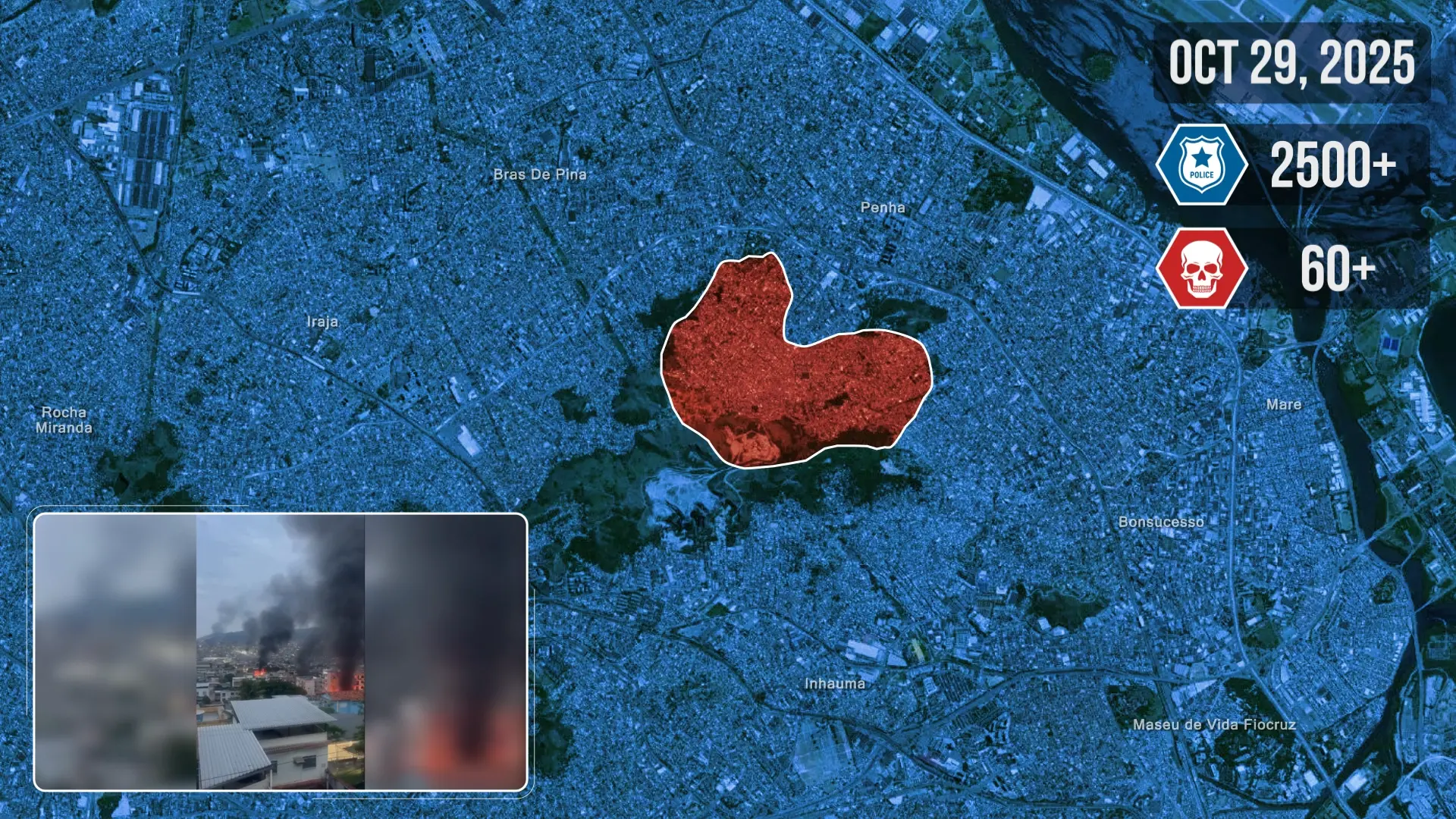
According to official statements, the operation had been planned for months, aimed at dismantling entrenched strongholds of the Red Command narco gang that had long resisted police entry. Intelligence gathered from surveillance, informants, and intercepted communications indicated that senior gang leaders were operating in the Penha region, coordinating trafficking routes and local extortion networks. The immediate trigger came after a surge of violence earlier in the week, including attacks on police patrols and reports of gang members forcibly imposing lockdowns on neighborhoods, pushing state authorities to initiate the operation ahead of schedule.

Though the offensive appeared sudden, it unfolded as part of a larger, pre-approved counternarcotics strategy designed to force gang units into open terrain where elite police divisions could neutralize them. Police command structured the operation around encirclement and containment, coordinating multiple branches of Rio’s security forces under a single plan. Armored vehicles from the military police advanced through the narrow streets of the Penha complex, clearing access routes and blocking exits, while Bope, the elite police special-operations unit, positioned small assault teams in the surrounding hills and forested escape routes.
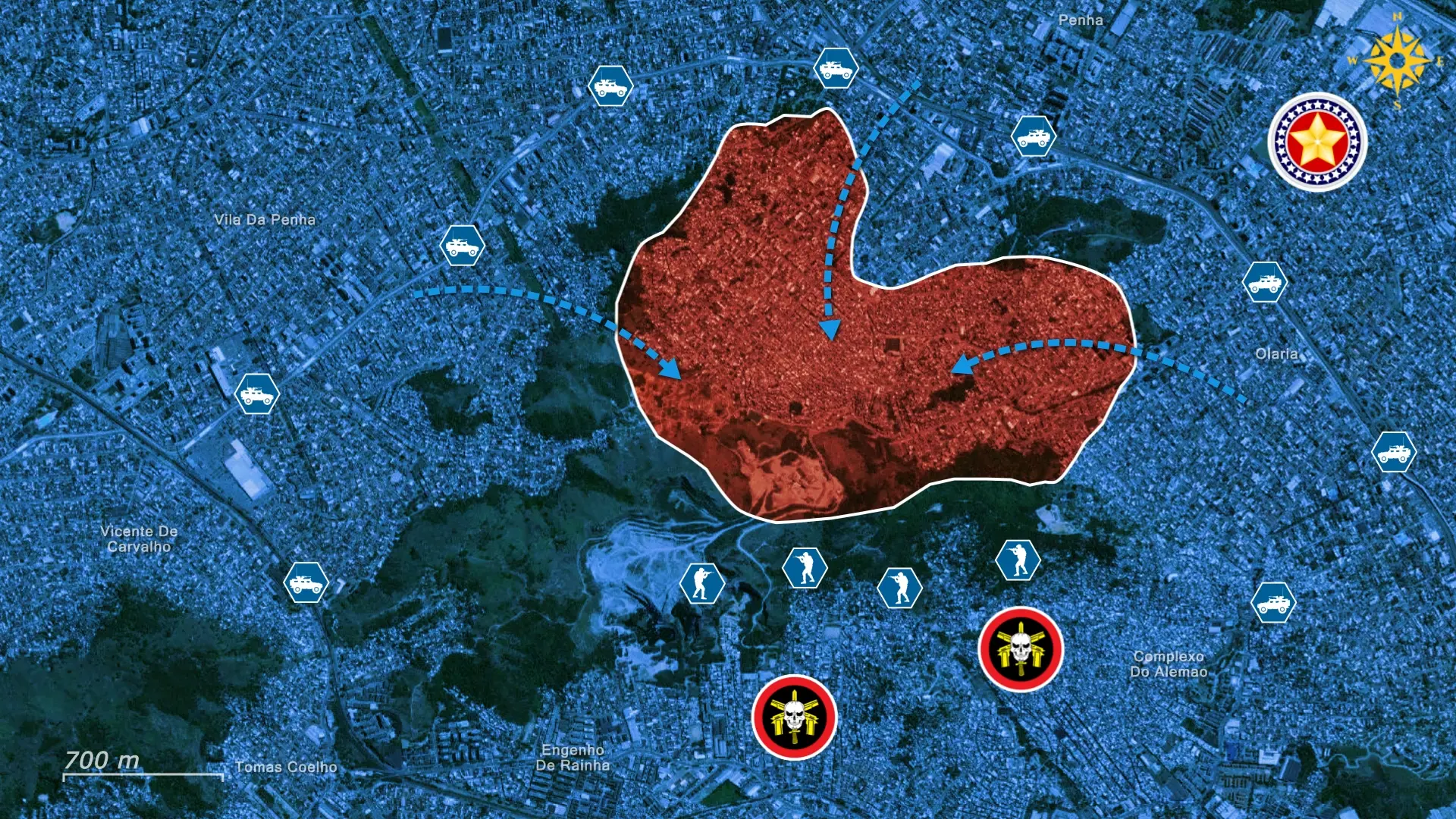
The raid was launched in the pre-dawn hours to catch gang members while most were still inside their homes, a common tactic to limit resistance and confusion. Once movement began inside the favelas, police aimed to funnel suspects out of the dense urban terrain and into pre-designated ambush zones, on the forested hill at the mine quarry, where Bope’s hidden teams could intercept them with deadly precision.
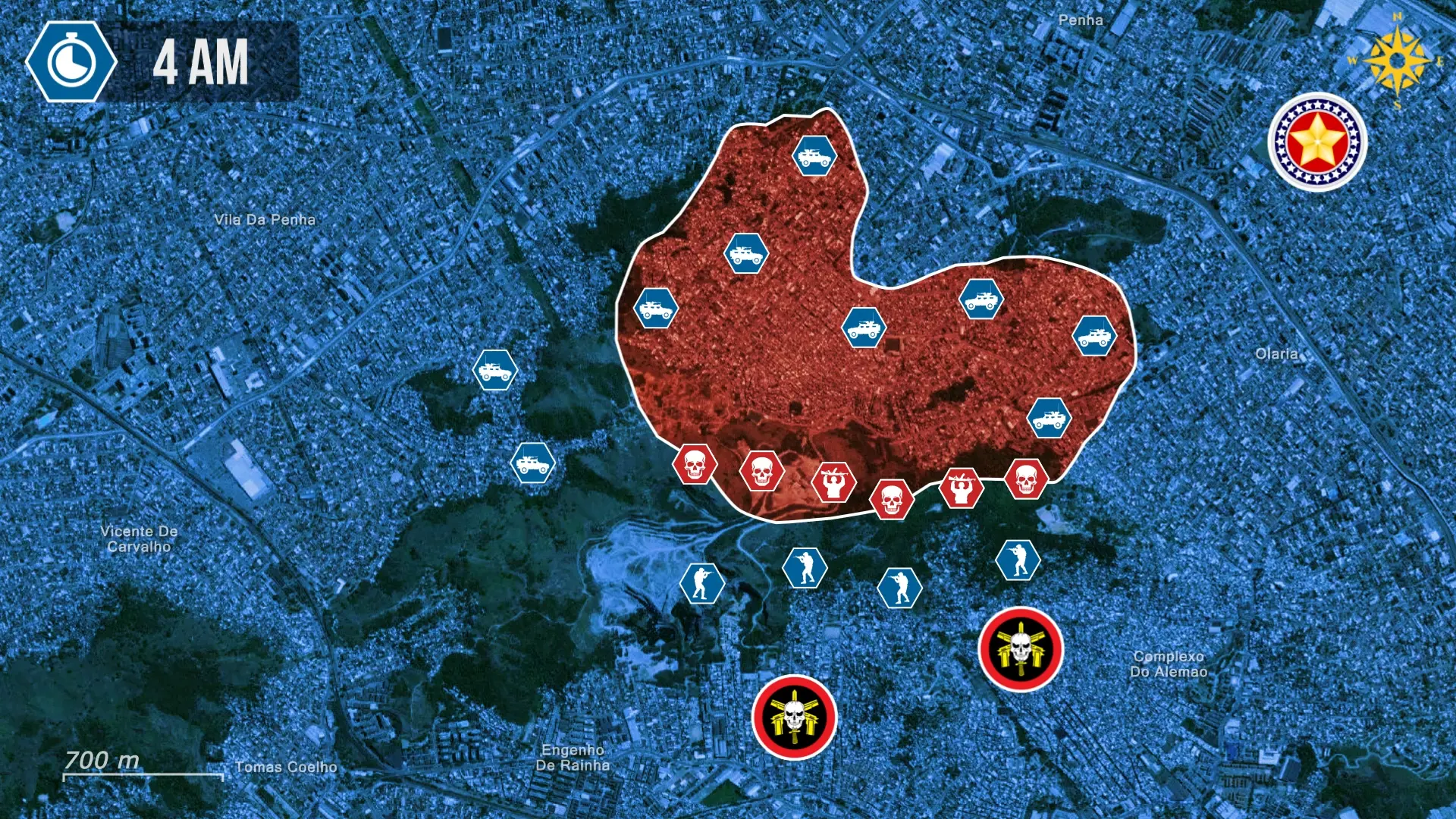
For years, Rio’s gangs had relied on civilians as human shields, occupying homes and rooftops to deter police fire.
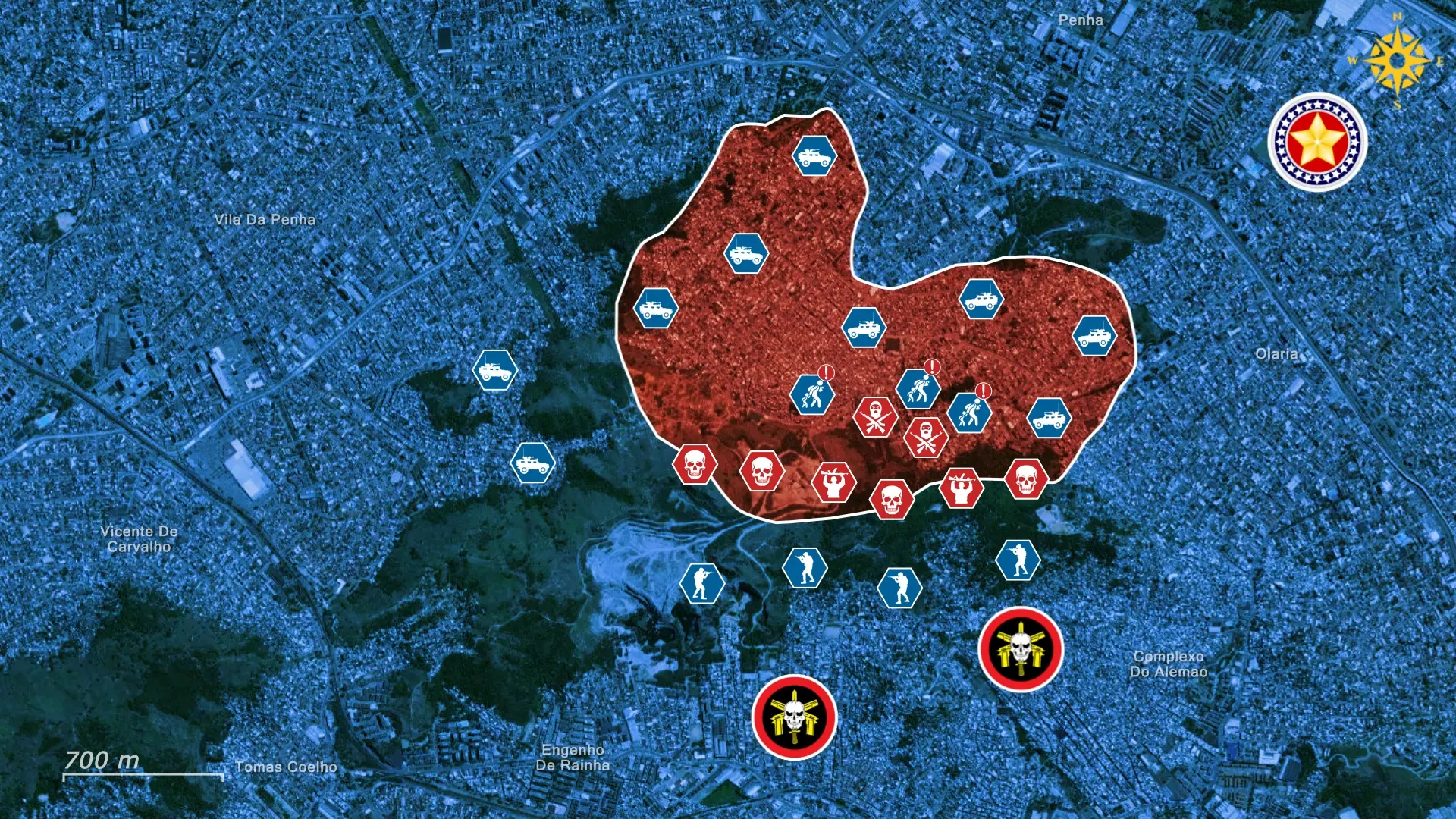
But once driven into open terrain, that advantage disappeared entirely. Surrounded and exposed, the fighters suffered overwhelming losses; over 130 were killed, and dozens more captured, while only four police officers died in the clashes.

Unlike the infamous Mexican cartels, Rio’s gangs lack structure, training, and discipline, depending instead on intimidation and the maze of the favelas to survive. When they are forced out of that environment and into the open, their tactical cohesion collapses entirely, resulting in a one-sided outcome seen here, a 50 to 1 kill and capture ratio in favor of Rio’s security forces.
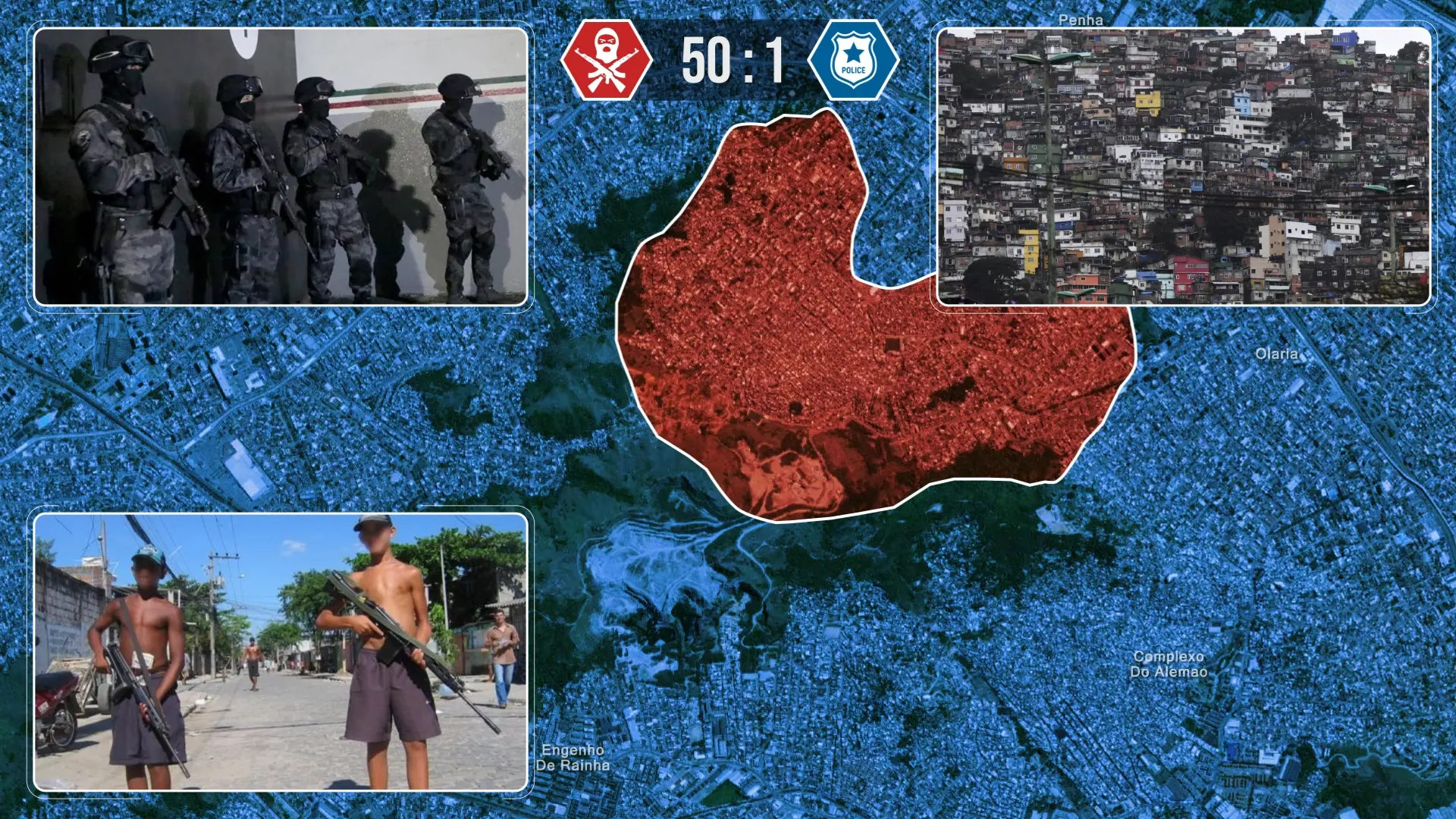
By the end of the day, the Red Command’s command structure in the favela complexes was shattered. Police seized weapons caches, radios, and significant quantities of narcotics. Reuters reporters described entire streets lined with bodies dragged down from the forest, calling it the deadliest police operation in Brazil’s history.
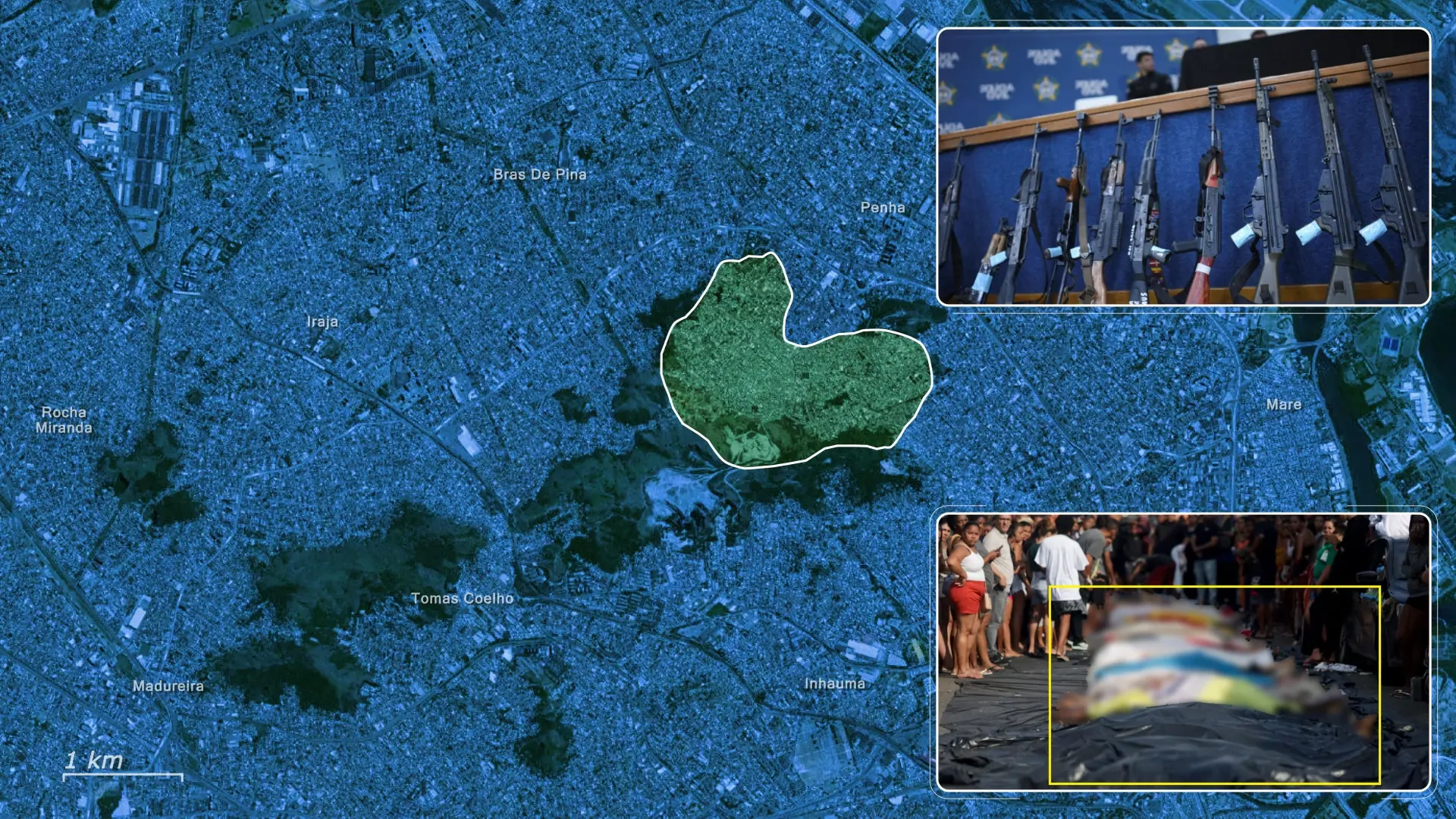
The government hailed the mission as a decisive victory against organized crime, though human rights groups demanded investigations into possible unlawful killings. Residents reported that gunfire continued into the night, but by morning, the favelas were under full police control, and the gang-initiated city-district lockdowns had been lifted.
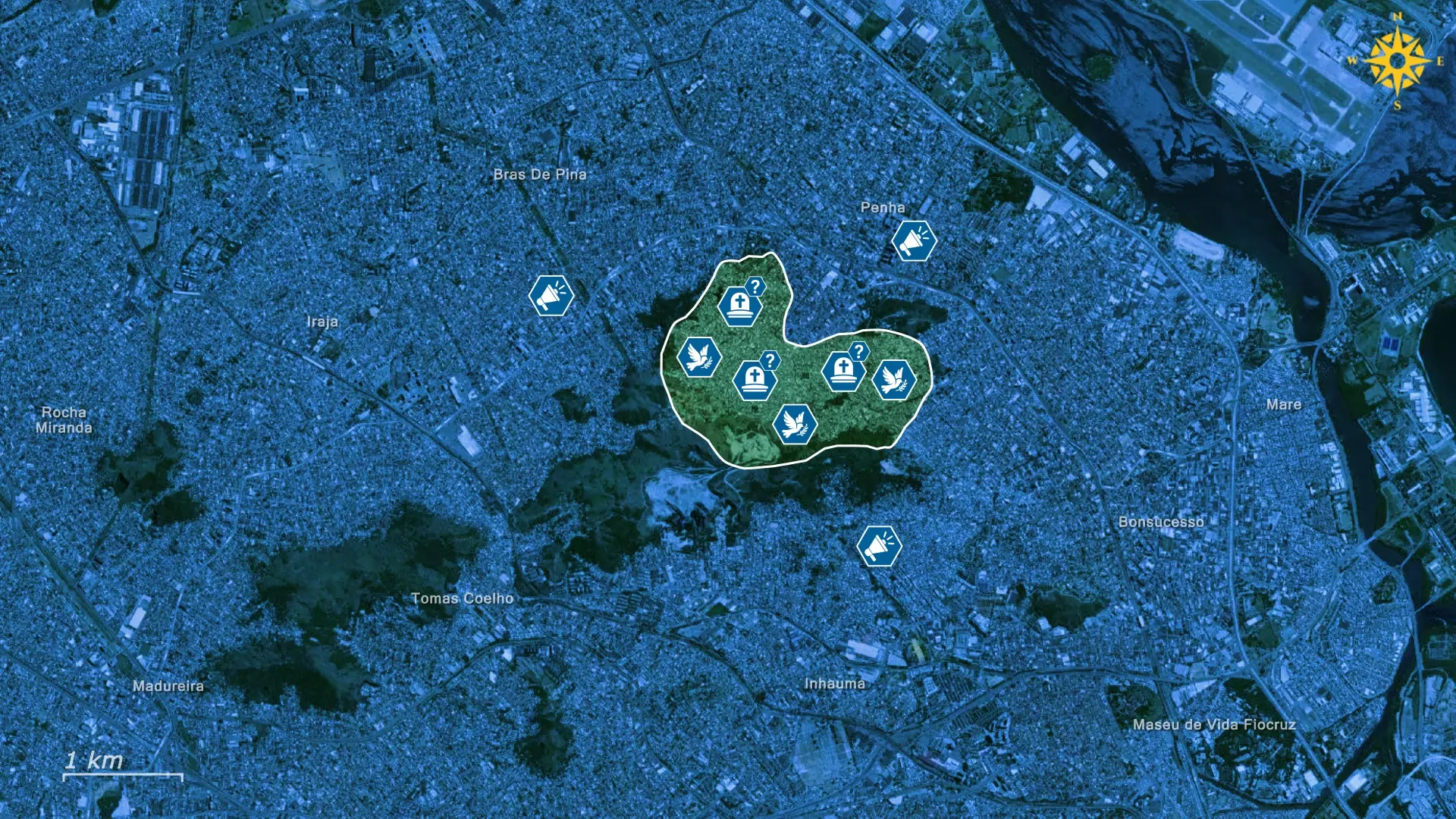
Overall, the police operation in Rio showcased the evolution of Brazil’s security forces from reactive policing to strategic, military-style coordination. By shaping the terrain, isolating the gangs, and using technology and planning to control the tempo of battle, the police achieved overwhelming tactical dominance. The operation’s success, however, came at a severe human cost, with suspected mounting civilian casualties and questions over the proportionality of force used. Still, in the eyes of Brazilian authorities, the Penha assault marked a turning point, a demonstration that through precision, coordination, and adaptability, the state could finally confront Rio’s criminal networks on its own terms.









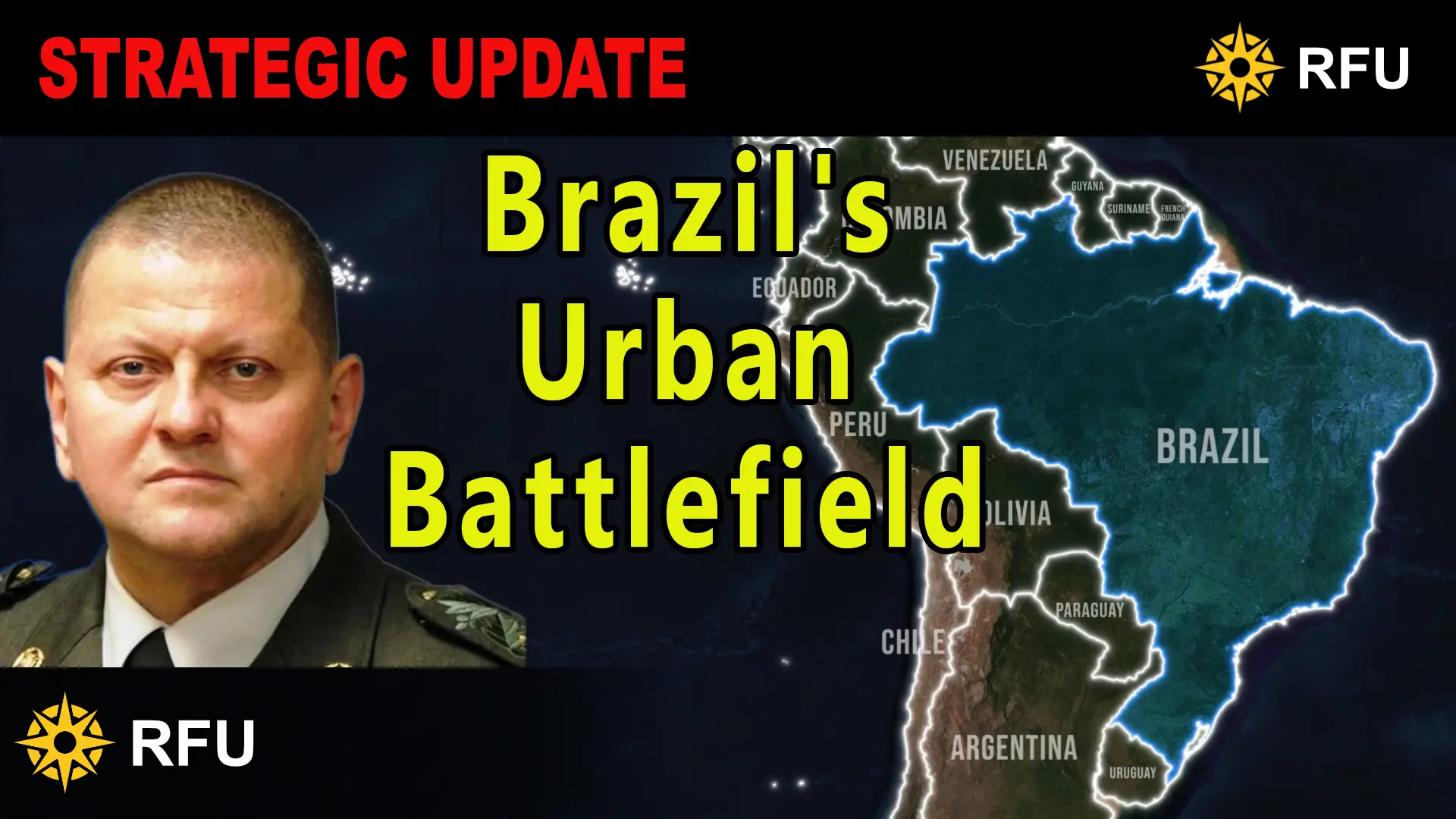
.jpg)
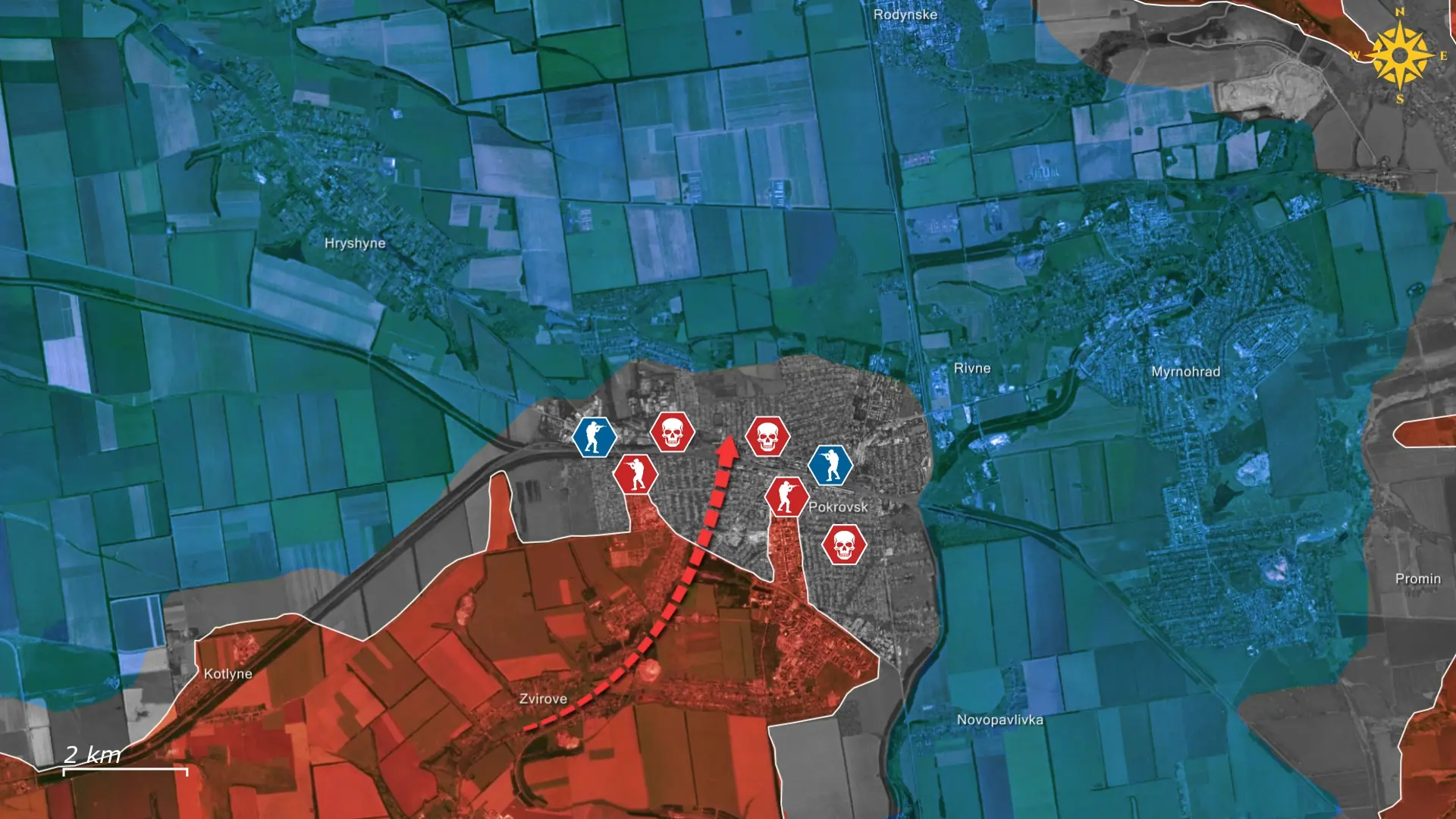
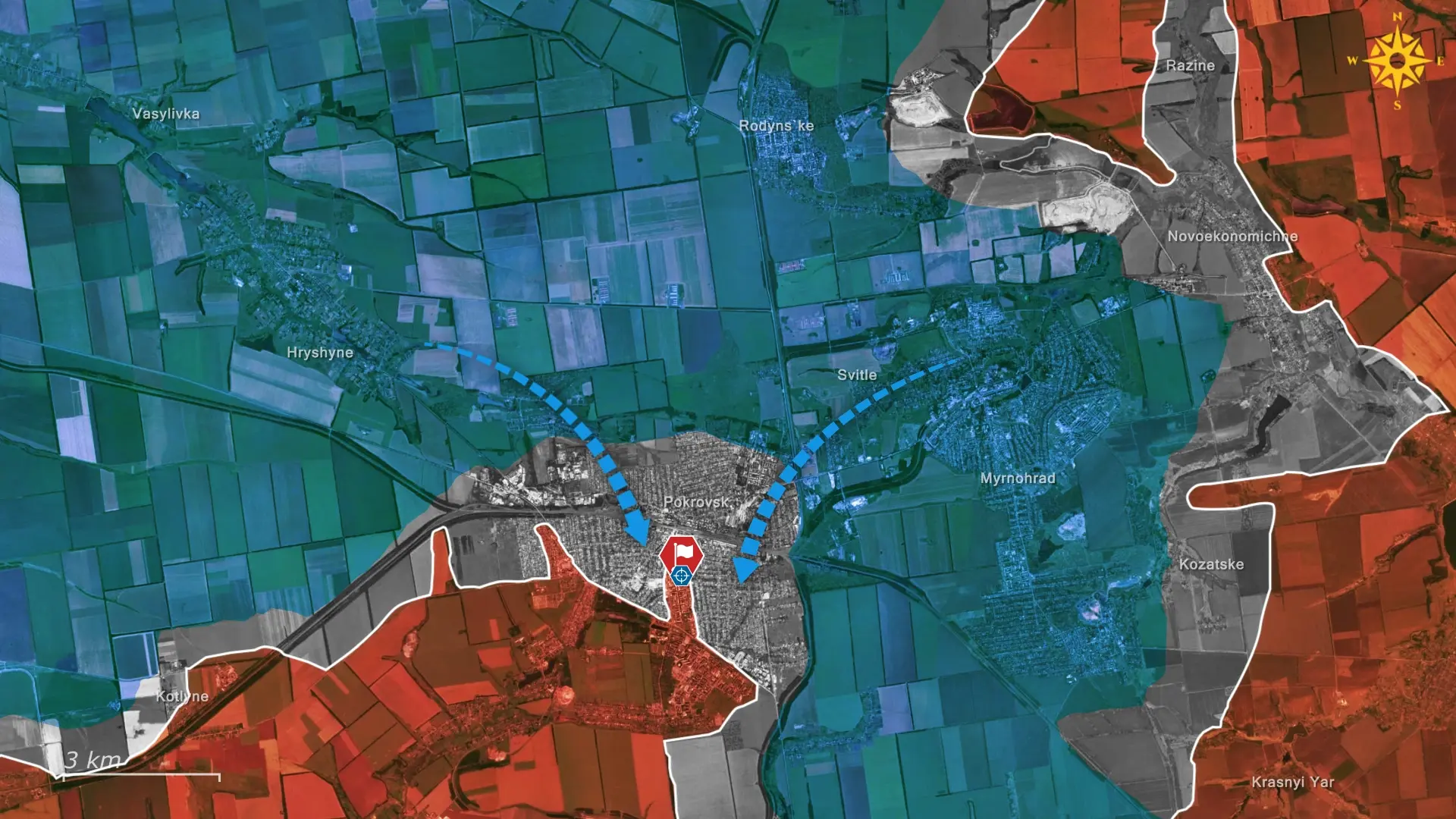
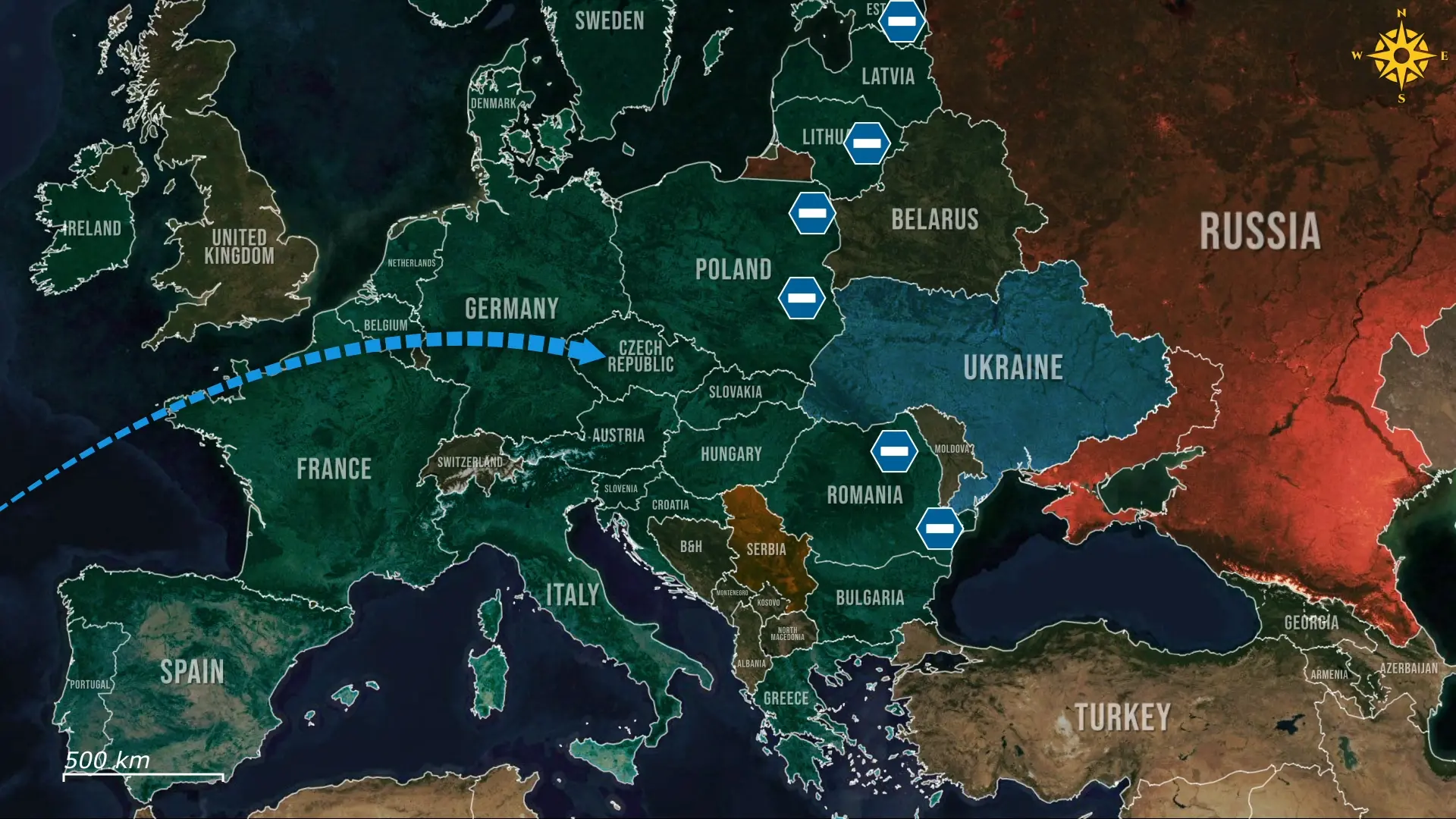
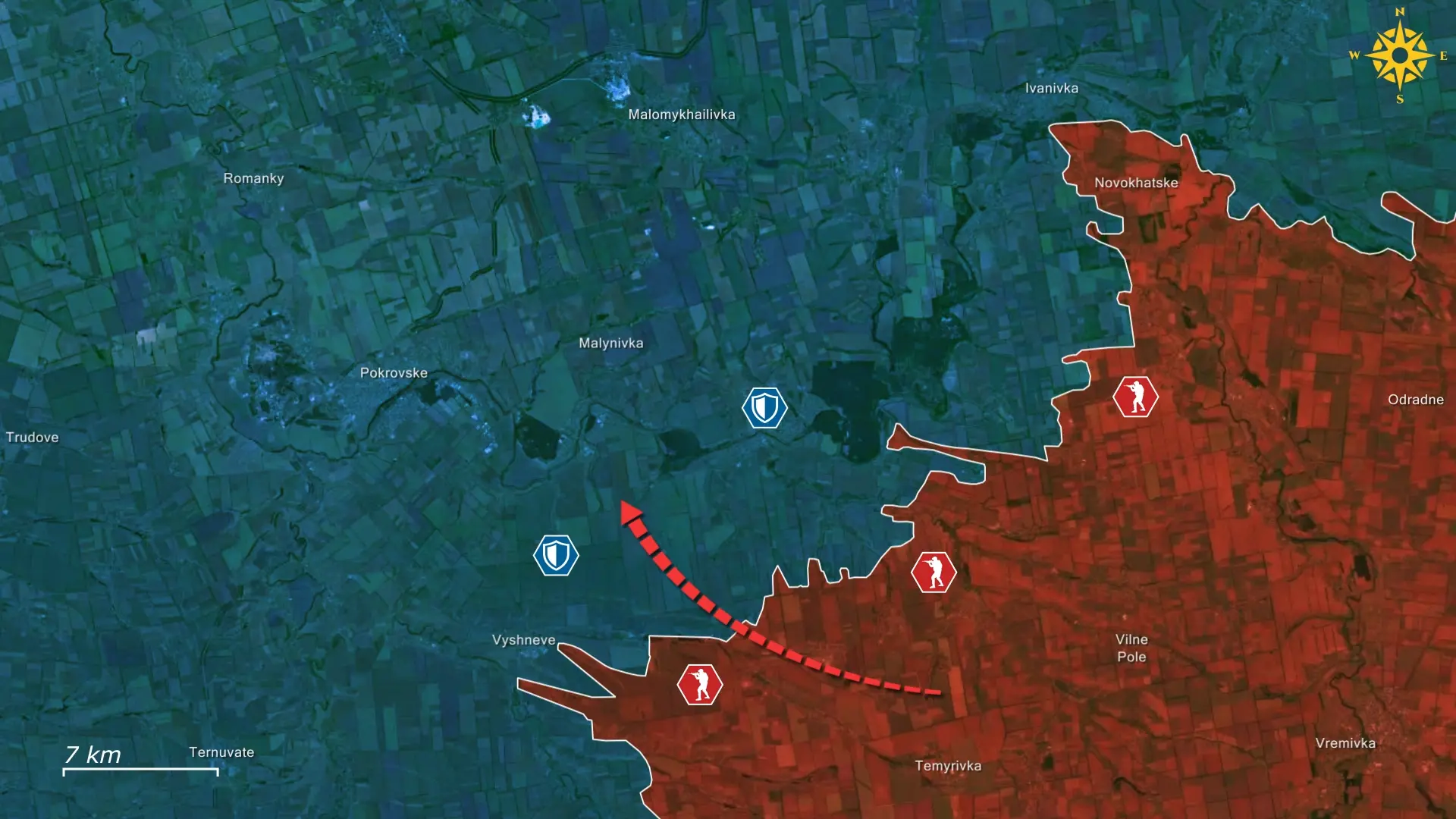
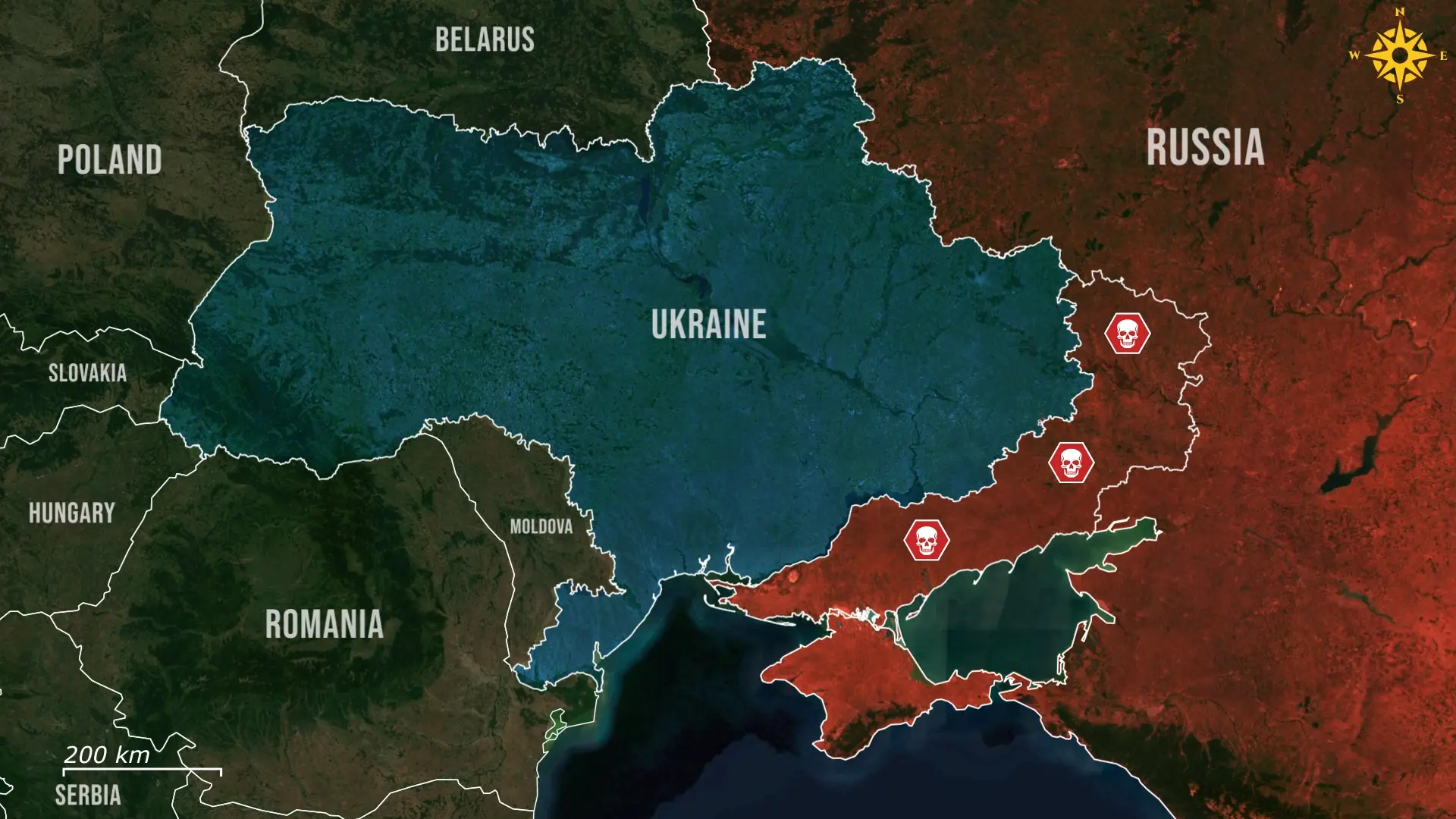
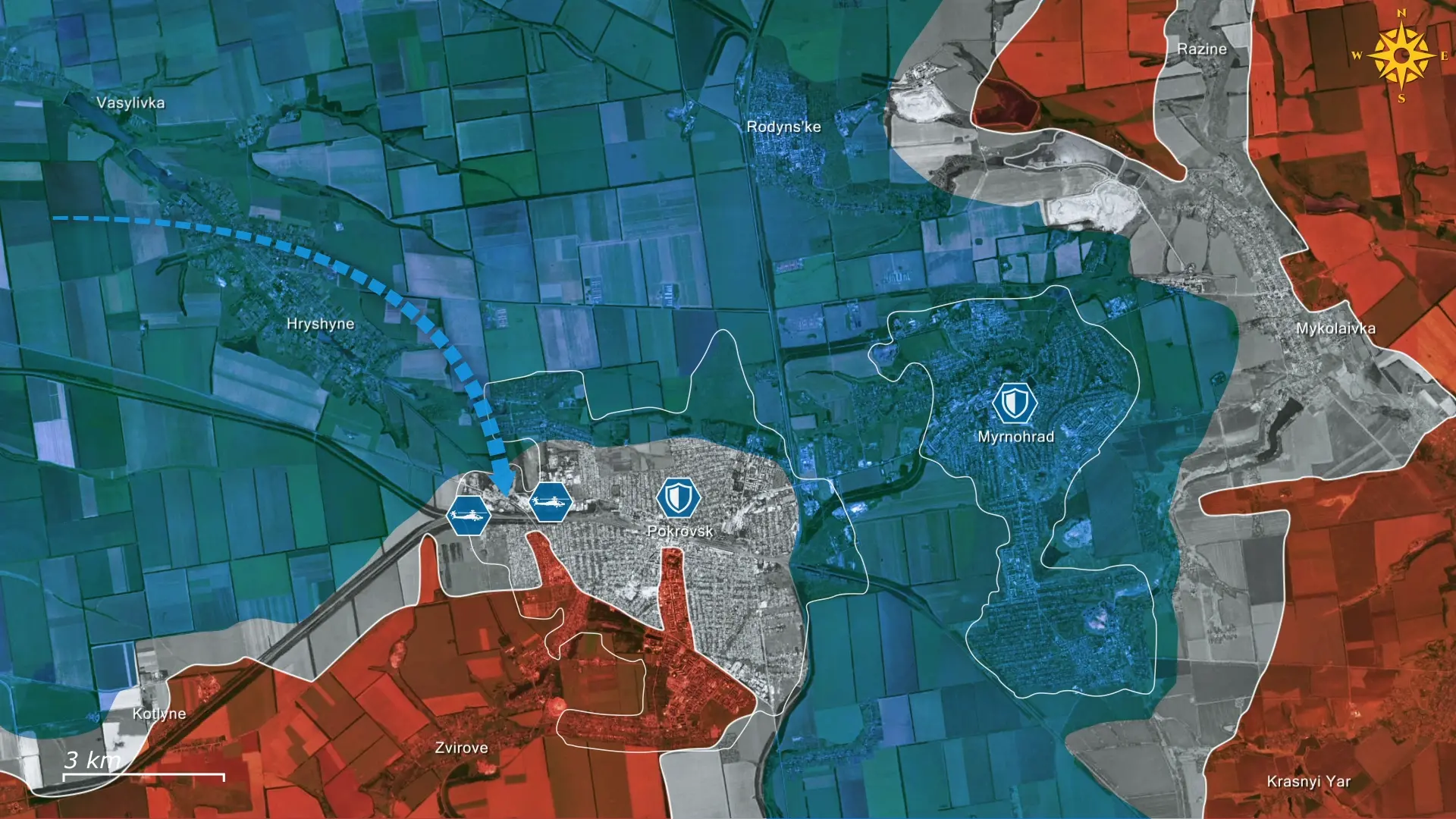

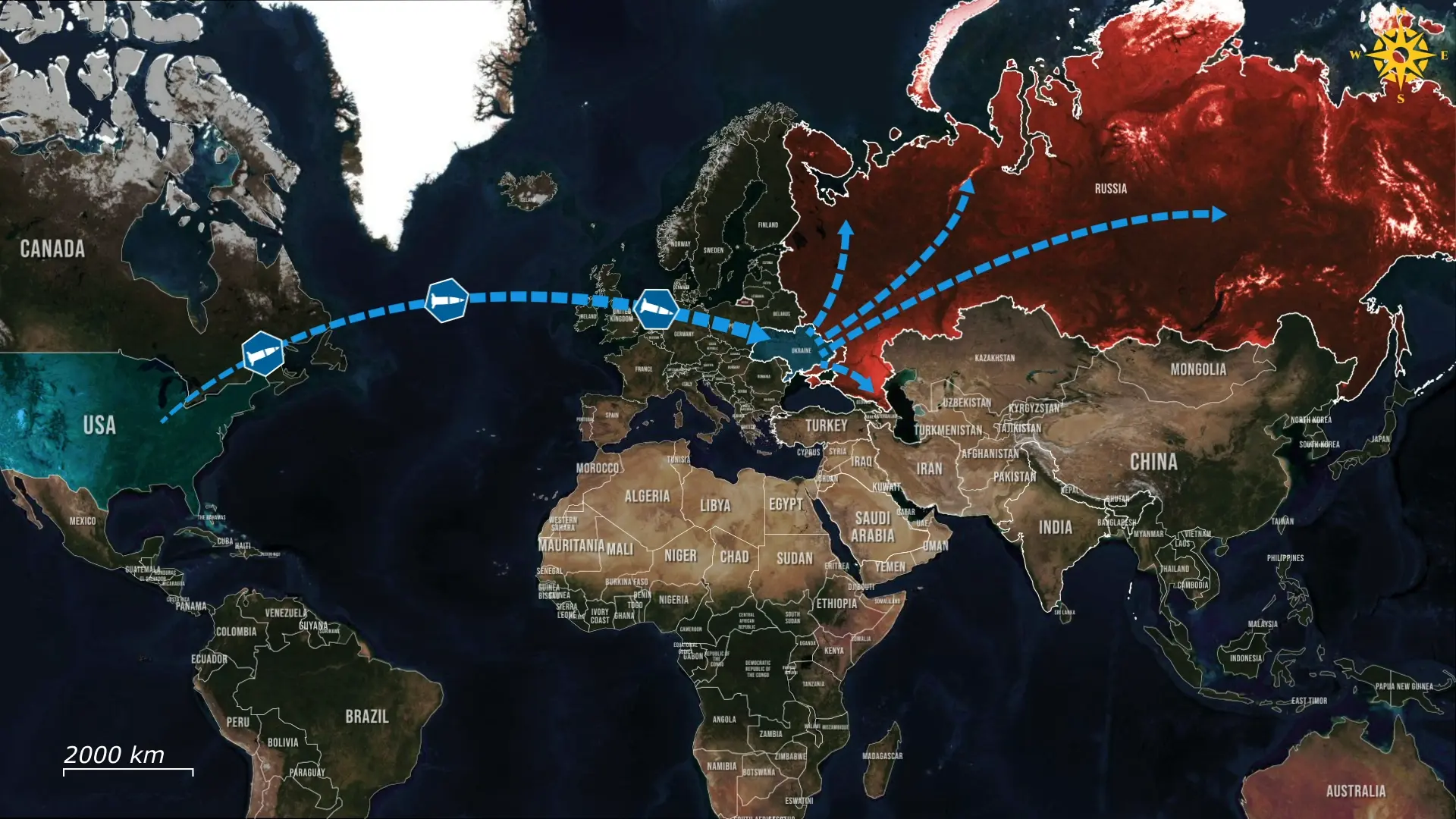
Comments